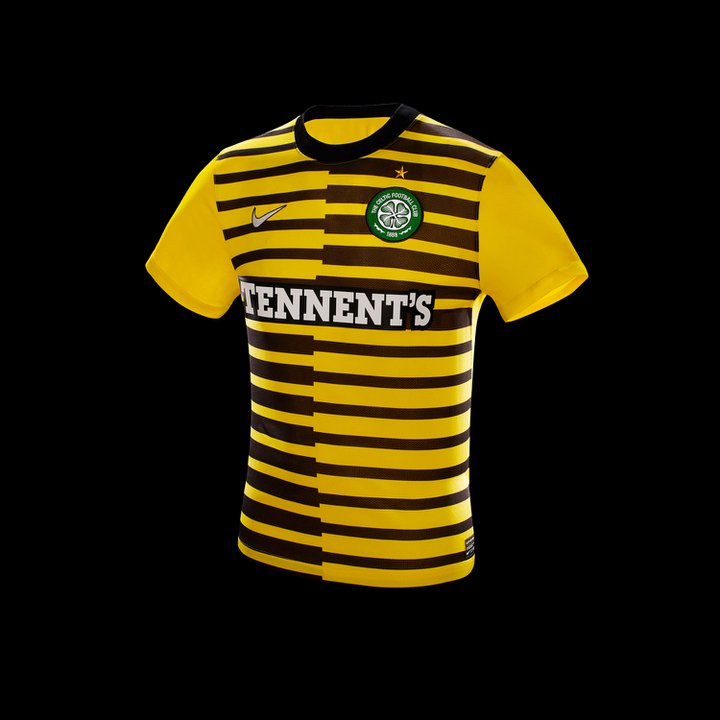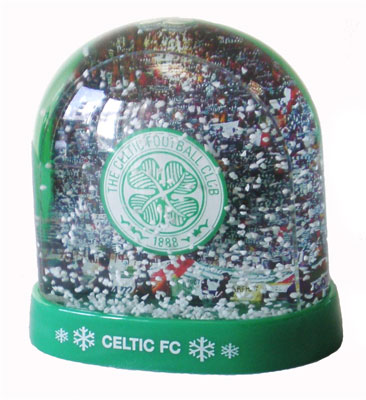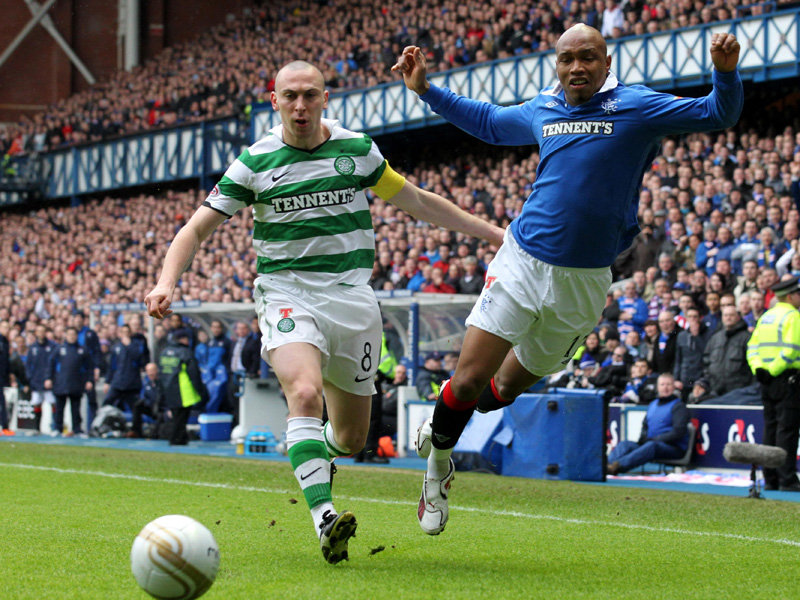Evolving from the heavy cotton material that would make players feel like a bulletproof vest had been attached to their jersey, the football shirt industry has evolved into a multi-million pound global phenomenon, with the most popular clubs shifting in excess of one million shirts a year. Celtic, according to Dr Peter Rohlmann from PR marketing, can break into the top ten biggest club shirts worldwide on occasions, with their average shirt sales of ‘several hundred thousand’. The argument is that shirt sales are higher in championship winning seasons, but a key belief as to why Celtic do not break into the top five despite the home shirt being iconic and known throughout the world, is that Celtic shirts are still predominantly bought by those who have a connection, however minor, with the club. The most successful clubs in terms of shirt sales, like Barcelona and Manchester United, attract customers to the shirt who are not supporters in a true sense. They simply buy the shirt because they chose to follow the team from afar. There is no connection, but they have been lured in by the dreaded phrase ‘global brand’ of the team.
Here is a confession of mine: I love football shirts. I remember the first time I received one, and it wasn’t even a replica. My fifth birthday, a beautiful plain sky blue nylon number with the number 5 on the back to remind me of my fifth birthday. It was plain, classy and beautiful. I have been a bit of an addict ever since. Without even thinking, I purchase every Coventry City shirt, home and away, every year. I even purchased the limited edition brown shirt we released in 2009 to pay homage to what is widely accepted as the worst football shirt of all time, the egg timer chocolate brown version of the 1970s. We only wore the most recent brown version once, and it was quickly confined to history. What shocked me whilst calculating the 20 previous Celtic way shirt releases since 1991 was that I own eighteen of them, only an apathy at the time preventing me purchasing the all green outfit worn on the infamous afternoon at Clyde, and the dull green Lisbon lions version from 2007/08. I have all the rest, including the pioneer of awful Celtic away shirts, the People’s mishmash of green that does look like a child’s plate and nappy mixed together, eaten and vomited onto nylon.
As to the new shirt, there are obviously far more important issues in the world, and even far greater topics with in the world of Celtic, to comment on, but is it really that disgusting, as some have fiercely argued? I did hear it suggested that Commons and Hooper were embarrassed to wear it in the promotional pictures, although this may be as a result of the photographer wanting the mean and moody ‘we have just lost a title, we are going to win it in this loud shirt but we aren’t smiling until we do’ look. In favour of the international away shirt, it will no longer fade into the background. Without consulting the excellent Celtic Wiki, how many away jerseys of the last twenty years instantly jump to mind? Due to infamy rather than beauty, the bumblebee and the aforementioned People’s effort may be high on the list, whereas dull and uninspiring efforts like the 2008/09 yellow away shirt may already be largely forgotten.
A simple view to those who seem somewhat disappointed by the new shirt, is that nobody is forced to buy a football shirt. Many fans never wear one. Some will only ever wear their shirt at the match or whilst playing football themselves. The football shirt industry has evolved into a fashion parade, although critics of the new shirt may suggest that it is about as fashionable as a beige mac. Which may actually be fashionable again, I only ever wear lumberjack shirts and have no idea. Celtic do deserve credit for selling all shirts minus the sponsor, especially when many clubs sponsored by alcohol companies only remove the logo on junior shirts. The hoops, especially, look far more beautiful when they are not spoiled by a company whose sole purpose is to ensure that as many people get as drunk on their product as possible. The Nike argument, away from their interesting outlook on fashion, is one that remains. The last three Celtic away shirts have all been manufactured in Thailand, whereas the last three home shirts, beginning with the most recent, have been manufactured in Bangladesh, Tunisia and Morocco respectively. Despite a code of conduct which states that working hours should not be in excess of 60 hours a week, and that employees must be aged 16 or over, Nike themselves on their own Nikebiz website acknowledged that:
‘What we’ve learned, after nearly a decade, is that monitoring alone hasn’t solved the problems. And many of the problems are recurring in the industry….Our focus now is getting to the root of the problems’.
This admittance of past failure in terms of ethics is in response to pressure groups such as Educating for Justice, who claimed in 2004 that:
1-25% of work hours in partner factories exceeded Nike code of conduct.
25-50% of partner factories are making workers work seven days a week.
25-50% of partner factories, workers are paid below the minimum wage.
Nike do state that conditions have improved, but there is still a sour taste that a club that was founded with the wonderful ideology of feeding poor children in Glasgow’s east end, can climb into bed with a company that, in the past at least, has treated workers, included child workers, with such disdain and contempt.
Ultimately, despite the uneasy aspect about a 21st change jersey to be released in twenty years (and with a 22nd to arrive soon) this shirt will still sell in its thousands. That wonderful Celtic badge transcends any debatable fashion statement. As long as the beautiful badge is displayed on the inspiring hooped shirts, the away jerseys matter little. Celtic shirts may not shrink to fit inferior players, but they change jerseys may sometimes require sunglasses, paracetemol, and a prior warning. At least it’ll be remembered, if not for the right reasons.





